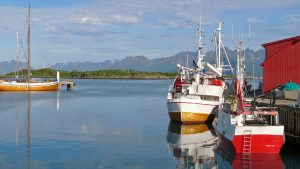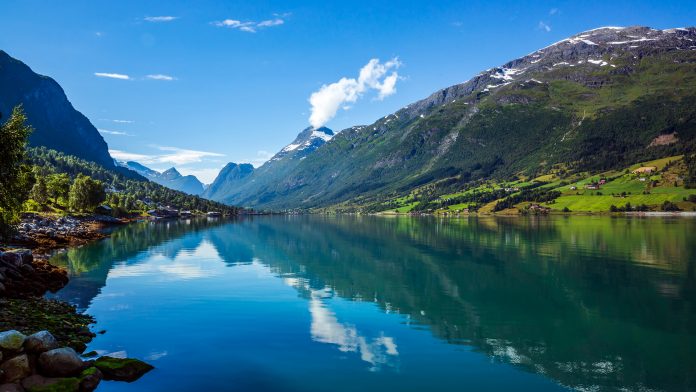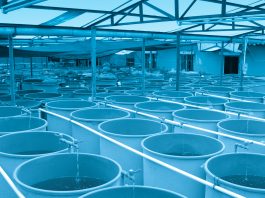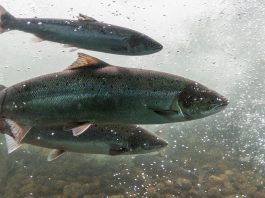The Innovation Platform spoke to Bjørnar Skjæran, Norway’s Minister of Fisheries and Ocean Policy, about the government’s plan to optimise sustainable aquaculture in the country.
Norway’s natural landscape comprises the perfect conditions for a thriving Norwegian aquaculture industry. The country has a unique advantage, with the cold and clear water of the Norwegian fjords being ideal for fish farming. Since the 1970s, when fish farming began, methods have rapidly developed to cement Norway’s position as a world leader in aquaculture.
Today, Norwegian aquaculture is among the largest export industries in the country. As countries shift toward sustainable aquaculture practices, for Norway’s aquaculture industry to continue to grow, the industry must focus on developing sustainable production processes. The Norwegian Government is assisting this effort and is working with the industry and research institutions to usher in a new era of sustainability for the aquaculture industry. The Innovation Platform spoke to Bjørnar Skjæran, Minister of Fisheries and Ocean Policy of Norway, to find out more.
What are the main focuses and aims of the Ministry of Trade, Industry and Fisheries currently?
As the Minister of Fisheries and Ocean Policy, my main concern is how to develop fisheries, aquaculture, and coastal industries in a sustainable and just manner. These industries are crucial for economic growth and employment in communities all along the vast Norwegian coastline. Therefore, it is important to ensure that future generations may harvest from the ocean as we do today. Locally, we must be aware of the ecological footprint of our activities. From a global perspective, we need to cut carbon emissions and simultaneously increase production to meet the growing demand for Norwegian seafood. Innovation and technological development will play a major part.
Along the social dimension of sustainability, I believe that the legitimacy of industries that utilise the commons depends on how the gains are shared between business owners, labourers, local communities, and the general public. Decent working conditions along the value chains of fisheries, aquaculture, and coastal industries are important in this regard.

Can you outline the aims of the government’s ‘Hurdalsplattformen’ in relation to aquaculture?
There are three crucial areas from my government’s platform, ‘Hurdalsplattformen,’ that we are currently working on.
First, to address the impact of aquaculture on local ecosystems and wild salmonoid stocks, we are working to further develop the traffic light system, which was established to ensure that the industry may grow within the confines of ecological sustainability. The industry still faces some challenges regarding sea lice, diseases, and fish health, and also the increasing awareness of fish welfare.
Second, to address the industry’s need for new localities, we are working to establish a framework for licencing aquaculture production at sea. Aquaculture at sea or ‘offshore aquaculture’ may contribute substantially to future growth.
Third, to address the need to reduce the carbon footprint of the industry, we are working along several dimensions, one of which is the development of more sustainable feed from local sources.
How are you working to address the main sustainability challenges?
A key success factor behind the nearly 50 years of steady development has been our ability to maintain an open and trust-based dialogue between government, industry, and research institutions. I will do my best to continue and strengthen this tradition because it is an important reason why Norway is a world-leading producer and exporter of seafood.

However, sustainability is a precondition for maintaining this position. Our experience is that economics, ecological impact, fish health, and welfare are closely linked. It is our policy to enable growth and competitiveness within the confines of ecological sustainability. Like all food production, there is an ecological footprint from aquaculture. To minimise this footprint, we have implemented the traffic light system, as mentioned previously, which will adjust production capacity.
The traffic light system divides the coast into production areas. Using measures of sea lice frequency on wild salmonoid stocks, the system determines whether the ecological impact of aquaculture is compatible with sustainable growth in each production area. Where the impact from aquaculture is deemed too high, production is reduced. There may be an increase in production in areas where this impact is considered acceptable.
There are also strict regulations on each production site. When deciding whether to allow production at a specific locality, the potential impact on the surrounding area in and around the pen is closely considered. Second, there are strict regulations and standards for how to run a site. For example, the seabed under open net pens is monitored for the impact of feed spills and faeces.
From a global perspective, the aquaculture industry provides the world with climate-friendly and healthy food. Yet, every industry must cut greenhouse gas emissions wherever possible. More than 70% of greenhouse gas emissions in the aquaculture industry come from fish feed – its production, processing, and transportation. We want to increase the possibilities to produce feed from local sustainable sources – such as new raw materials from the ocean, cultivated species like kelp and mussels, or algae. We must also use the resources more effectively, within a circular economy framework.
What role does innovation play in helping to successfully achieve your sustainability goals?
The aquaculture industry was born by local fishermen and farmers who wanted to add a little extra to their household income. Today, Norwegian aquaculture is among the largest export industries in the country, only trailing oil and gas. It has become a highly productive and professionalised industry, directly employing more than 8,000 people in coastal communities.
Innovation and the development of new technology are key to future success. If Norwegian aquaculture is to grow further, the industry will have to put substantial efforts into the research and development of new and more sustainable production processes. Innovation can happen through different routes, however, and some innovation processes have seemingly come a long way.
As mentioned, an important factor in explaining the success of Norwegian aquaculture is the close collaboration between government, industry, and research. One concrete result of this collaboration is the development of effective vaccines, which has resulted in the extraordinarily low use of antibiotics in Norwegian fish farming. This is an example of a highly successful medicinal innovation.
A few years ago, the sitting government unveiled the ‘development permits,’ a scheme by which the industry could apply for aquaculture licences by committing to invest substantially in developing new and more sustainable production techniques. In retrospect, we see that the design of the scheme could have been better, but there is no doubt that bolstered a lot of investment into mechanical innovation – in particular, closed cage pens and solutions for production in weather-exposed and offshore localities.
The industry has yet to solve all the challenges posed by sea lice. This affects wild salmonoid stocks, but it is also a health and welfare issue for farmed fish. While mechanical innovations such as closed cage pens may be effective in this regard, it is quite possible that a breakthrough may come from the biological innovation route. For example, farming salmon and sea trout together with other sea lice-eating species, or by the genetic route, developing lice-resistant fish. As we do not know what the future holds in terms of which innovations and technologies will be successful, the government is cautious to support investment and development efforts in a technology-neutral way.
It has recently been proposed to place offshore farming further out at sea, beyond the ‘traffic light system.’ What is it hoped this will achieve?
Today, aquaculture is limited to production in fjords and coastal waters. We are currently working to establish a framework for licencing aquaculture production at sea in order to meet the global demand for Norwegian seafood.
The Norwegian fjords have the best conditions in the world for producing Atlantic salmon and sea trout. We still believe that coastal production will be the backbone of the industry in the future. However, the fjords come in short supply, and so we see an opportunity to expand by moving further out to sea. As a nation with plenty of experience with the offshore industry, it seems like a viable next step.
Aquaculture at sea may also alleviate some of the pressure on the local ecosystems and wild salmonoid stocks in Norwegian fjords, as these production facilities will operate at a distance from land.
This is a major process, but we have reached several milestones already. The Directorate of Fisheries recently delivered their recommendations for which areas to open for aquaculture, and we are now thoroughly reviewing their report and conclusions.
I am excited to see how this new adventure unfolds. If we can continue the collaboration between government, industry, and research institutions, play on our strengths as a sea nation with offshore experience, competence, and technology, and truly utilise the comparative advantage for aquaculture that the cold, Norwegian sea water provides, we may well be seeing the beginning of a new era for Norwegian aquaculture.
Bjørnar Skjæran
Minister of Fisheries and Ocean Policy
Government of Norway
www.regjeringen.no/en/id4/
https://twitter.com/bjoskj
Please note, this article will also appear in the eleventh edition of our quarterly publication








